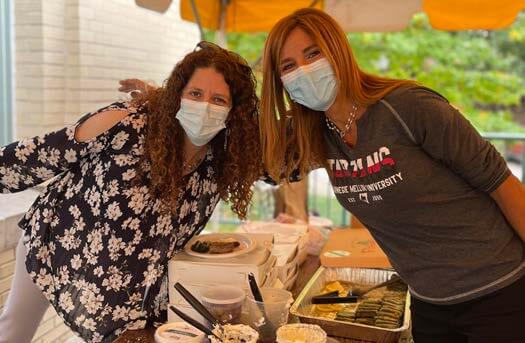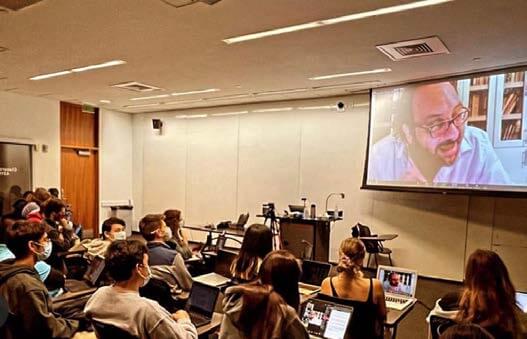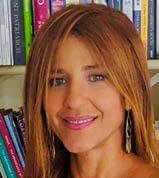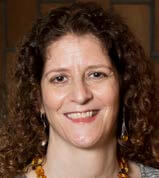Above: Ken Goldman. Jacob’s Ladder Triptych, 2015. Chromaluxe print after performance. Photos by Gideon Cohen
PEDAGOGY
How do food cultures allow us to approach cultural intersections and conflict? And what is the value of coteaching on a fraught region marked by asymmetrical power relations such as Israel/Palestine? We explored some of these questions after our College at Carnegie Mellon University approached us in the spring of 2019 about taking a group of students on a cuisine-focused trip to Israel and the West Bank the following year. The purpose of the trip, to be guided by Palestinian and Israeli food connoisseurs, was for students to learn about the entangled and conflictive food cultures of Israel and Palestine, through exchanges with culinary experts, visits to markets and home kitchens, and projects that would document their encounters with local cuisine. When the pandemic hit, we resolved to transform our thwarted travel plans into a perceptual learning journey in the form of a freshman seminar on Israeli and Palestinian food cultures.

Michal and Nevine serving food to their students. Photos courtesy of the authors
Coteaching, a long-sought pedagogical aspiration of ours, lends the course a measure of cultural depth, integrity, and innovation we were unlikely to offer students had we taught the class separately. Yet the dearth of coteaching on this topic in the US university setting did not provide models to which we could turn. As faculty members with expertise in Jewish history and Arabic cultural studies, of Israeli and Egyptian backgrounds respectively, there was another journey embedded in the experience we sought for our students, despite the absence of a Palestinian voice: one into each other’s inner cultures, given our diverse backgrounds, a possible paradigm for inquiry and exchange across cultural boundaries. In this essay, we share our experience of coteaching this course, first virtually in the spring of 2021, and then in-person in the fall of 2021, and the insights we have gained into the ways we might transform students’—sometimes stereotypical—knowledge of Israel and Palestine, even when unable to accomplish this through physical travel. Students were able to research, sample, and cook dishes, and find comfort in an experimental culinary journey during the uncertainties of the pandemic.
We therefore took our students on a voyage that challenges preconceptions, allowing them to explore cultural intersections and divergences between Israeli Jews and Palestinians, without eliding the asymmetry of regional power relations. Our integrated approach highlighted the longer history of Jews and Arabs, Jewish immigrants and Israeli nation-building, culinary appropriation and the expropriation of lands and resources. Students navigated the entwined histories and politics of local foodways, taking into account the diversity of Palestinian and Israeli Jewish identities, histories of migration, exile, displacement, colonialism, and nationalism. Their virtual tour comprised the landscapes and kitchens of Jerusalem, Nablus, Sebastia, Gaza, Jaffa, and Tel Aviv; memoirs; and documentary films. They engaged in intercultural exchanges with prominent chefs and food writers in the Palestinian and Israeli culinary world—a chef from Bethlehem, a food journalist for Haaretz, and a professor and founder of Conflict Kitchen (a restaurant in Pittsburgh that served cuisine from countries with which the United States is in conflict and sought to expand the engagement the public has with the culture, politics, and issues at stake within the focus region).These speakers enriched students’ learning about the issues of foraging, culinary provenance, and the effects of military occupation and the separation barrier wall on agriculture and travel restrictions. In our selection of a novel, we settled on Palestinian American novelist Hala Alyan’s Salt Houses (2017), which traces the story of the displacement of a Palestinian family across several generations. Though Palestinian food is not a central theme in the novel, it figures in the characters’ search for belonging and their memories of home (e.g., maqlouba, koussa, and kanafeh). As the novel did not include Israeli Jewish voices, we assigned several short pieces addressing food by contemporary Israeli authors Moshe Sakal (e.g., kibbeh), Ayelet Tsabari (e.g., hawayij and Yemeni soup), and Yahil Zaban (e.g., gefilte fish), and excerpts of Ariel Sabar’s My Father’s Paradise (e.g., kubeh and matzoh).
To provide ourselves with a framework of the success of the course in complicating students’ understanding of Israel and Palestine, we polled them through two anonymous surveys on the first (69 respondents) and last (49 respondents) days of classes. We sought to assess students’ conceptual associations with Israel, Palestine, ethnic and national identity, and food consumed by Jewish Israelis and Palestinians. The concluding survey included additional questions on words they associate with Palestinian and Israeli cuisines, the distinction between “Jewish” and “Israeli,” their knowledge of the diverse ethnic identities in the region, and the proportional weight given to Palestinian and Israeli cultures. We will only share a selection of the terms from responses to two of these questions.

Students interacting with guest speaker, Palestinian chef Fadi Kattan (on screen) joining our class from Bethlehem, the West Bank, fall 2021.
While in the first survey 58 percent of participants viewed Israel through a colonial, nationalist lens (“conflict, war/s, colonial state, wall, oppression, Zionism”), in the last survey, 86 percent focused on the contribution of Jewish ethnic diversity and of Palestinians to cultural developments in Israeli history, in addition to the occupation (“rootedness, diaspora, Zionism, new Jew, sabich, appropriation, de-Arabization/re-Arabization, colonization”). Similarly, 93 percent viewed Palestine in the first survey as a space of political tensions (“conflict, tension, war-torn, not a country on the map, wall, oppression”), violence, and religion (“terrorism, anger, Muslim”). In the last survey, 63 percent employed more tangible, culturally and politically specific terms (“nafas,” the “elusive gift that makes food taste better” (Kassis); “Jaffa oranges; maklouba; preserving culinary knowledge, appropriated, colonized, displaced, rootedness, diverse”). This denotes a broadening of the students’ knowledge of the topic, from a set of preconceived ideas to a deeper understanding of complex cultural processes through history.
Students’ journey into the culinary landscapes of Israel and Palestine in this course allowed them to travel beyond stereotypes and simplistic associations of violence and religion, into spaces, such as Gaza and the Aida and Burj El Barajneh refugee camps, that only a virtual trip would permit. Course materials and guest speakers strengthened students’ grasp of the different views on the ongoing, heated debate about Israeli culinary appropriation of Palestinian food and of the cultural intersections of local and regional foodways. They encountered both cuisines through on-campus events, researched food items (e.g., zaatar, akoub, malabi) in their final projects, and discerned the importance of heritage and connectedness to the land as an essential source for flavors, uniqueness, and diversity. Our pedagogical journey through this unusual topic has been rewarding, and we look forward to another iteration of the course in the upcoming academic year, and a prospective trip to Israel and the West Bank.
Selected course readings and films: https://bit.ly/ajs-coteach

Nevine Abraham is assistant teaching professor of Arabic Studies in the Department of Modern Languages at Carnegie Mellon University. She recently published “Patriarchy, Subordination, and Rise of the Individual in Hisham Matar’s In the Country of Men” in Arab Studies Quarterly 43, no. 4 (2021), and co-authored “An Oral History of Mouloukhiya from Egypt, Palestine, Tunisia, and Japan” in The Markaz Review (2022).

Michal R. Friedman is assistant teaching professor and the Jack Buncher Endowed Chair in Jewish Studies in the Department of History at Carnegie Mellon University. She recently served as guest editor of for Quest: Issues in Contemporary Jewish History 18 (December 2021), titled “Genealogies of Sepharad (Jewish Spain).”